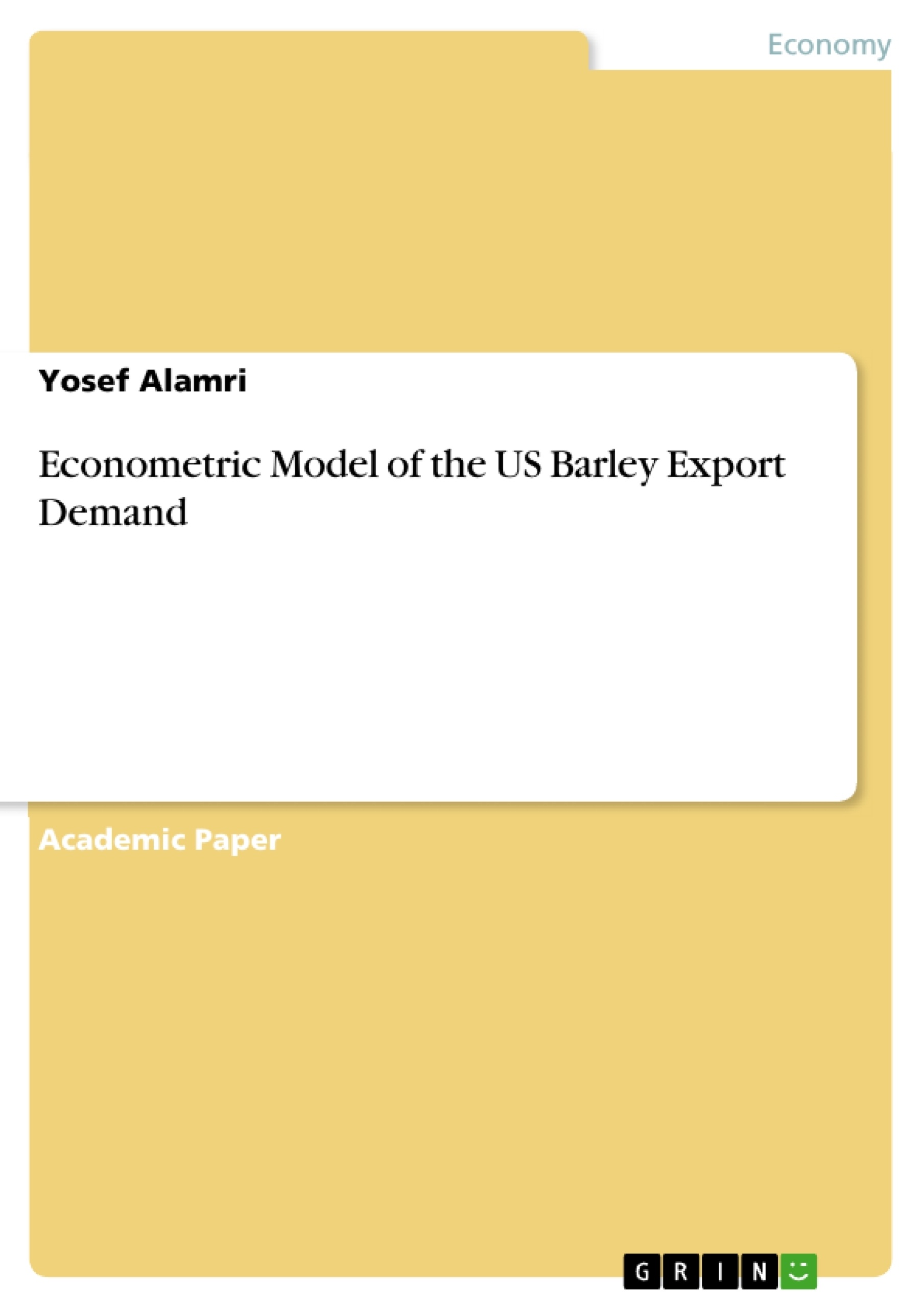In this paper, we apply the techniques and tests as they represent from another researcher to estimates econometric model for barley export demand. The data were collected from USDA and FAO. This paper uses different instrumental variable estimations. We test for endogeneity by introducing the Hausman test, test for overidentification by Sargan test, and test the goodness of IV by using F-test.
Inhaltsverzeichnis (Table of Contents)
- INTRODUCTION
- RESEARCH PROBLEM
- MODEL DEVELOPMENT
- DATA
- METHODS AND RESULTS
- Characteristics of ordinary least square estimates:
- Estimating equations using Two-Stage Least Squares (2SLS):
- RESULT AND DISCUSSION
Zielsetzung und Themenschwerpunkte (Objectives and Key Themes)
This paper aims to investigate the effects of barley exports from the US by estimating a system of barley export equations. The research aims to determine the factors influencing barley exports and their impact on US trade and prices. This study focuses on the US due to its significant share of world barley exports and its potential influence on future policy-making and export quantities.
- Impact of barley exports on US trade and prices
- Factors influencing barley exports from the US
- Econometric modeling of barley export demand
- Application of instrumental variable estimation techniques
- Testing for endogeneity and overidentification
Zusammenfassung der Kapitel (Chapter Summaries)
- INTRODUCTION: This chapter provides an overview of the importance of barley in the global agricultural sector and highlights the significance of econometric modeling for policy and planning. It discusses the role of barley in US agricultural programs and its impact on world trade.
- RESEARCH PROBLEM: This chapter emphasizes the importance of food problems and their political and economic implications. It highlights the significance of barley exports and the need to understand the factors affecting them. The chapter outlines the purpose of the research and its focus on US barley exports.
- MODEL DEVELOPMENT: This chapter presents the derivation of the U.S. barley export model from supply and demand equations. It defines the variables used in the model and provides a detailed explanation of their expected signs.
- DATA: This chapter describes the data sources and the period used in the econometric modeling. It highlights the collection of annual data from the United States Department of Agriculture (USDA) and the Food and Agriculture Organization of the United Nations (FAO).
- METHODS AND RESULTS: This chapter reviews the characteristics of ordinary least squares (OLS) and two-stage least squares (2SLS) estimation techniques. It explains the rationale behind using 2SLS in this study and discusses the limitations of OLS when dealing with endogenous variables.
Schlüsselwörter (Keywords)
The main keywords and focus topics of the text are: barley export demand, econometric modeling, instrumental variable estimations, endogeneity, overidentification, Hausman test, Sargan test, F-test, US barley exports, world barley trade, supply and demand equations, ending stocks, domestic consumption, barley price, live animals, statistical significance, OLS, 2SLS, heteroskedasticity, autocorrelation.
- Quote paper
- Yosef Alamri (Author), 2018, Econometric Model of the US Barley Export Demand, Munich, GRIN Verlag, https://www.grin.com/document/386672



